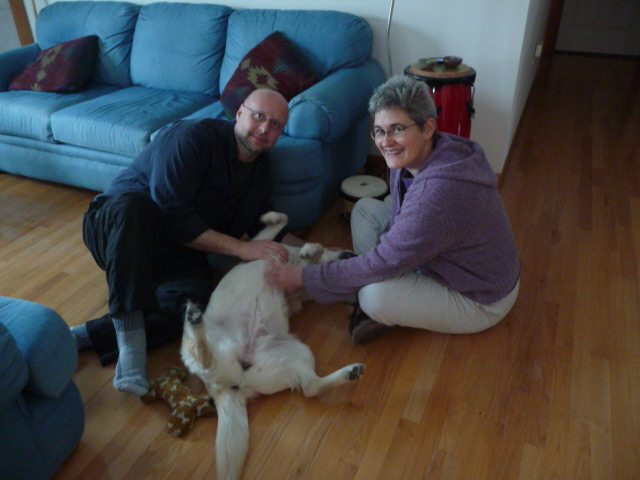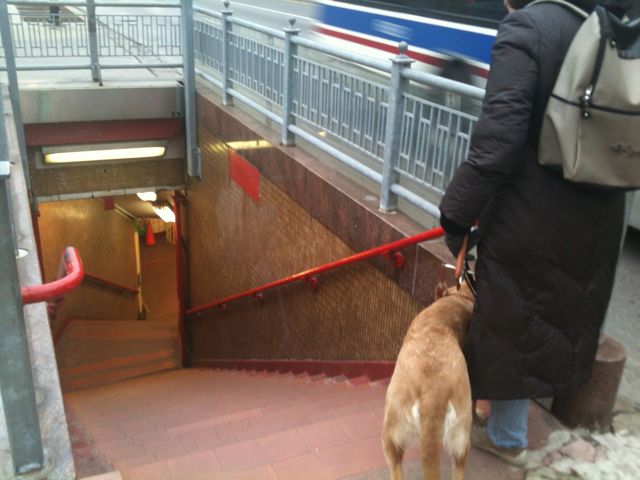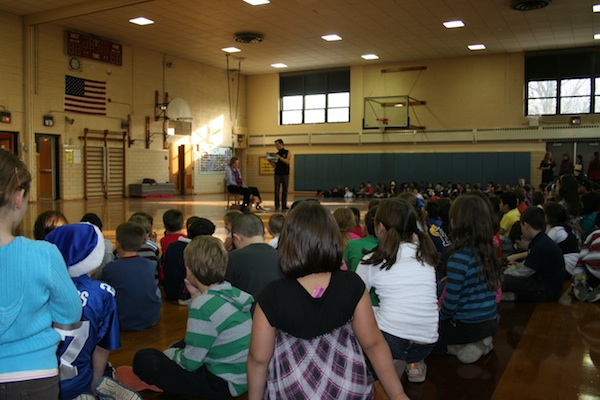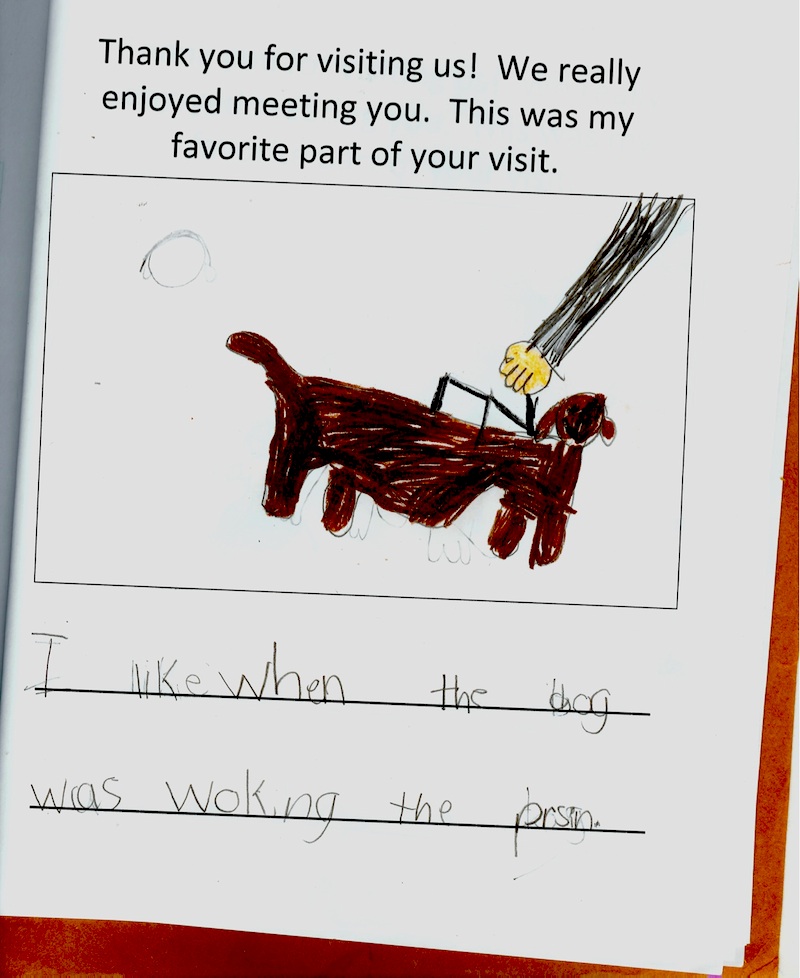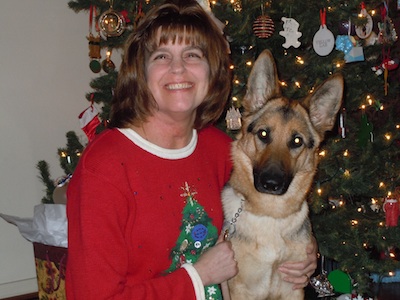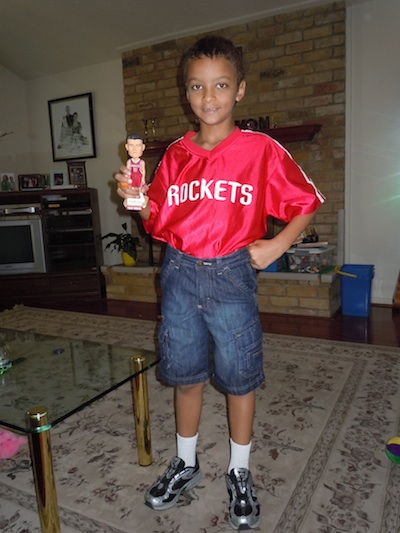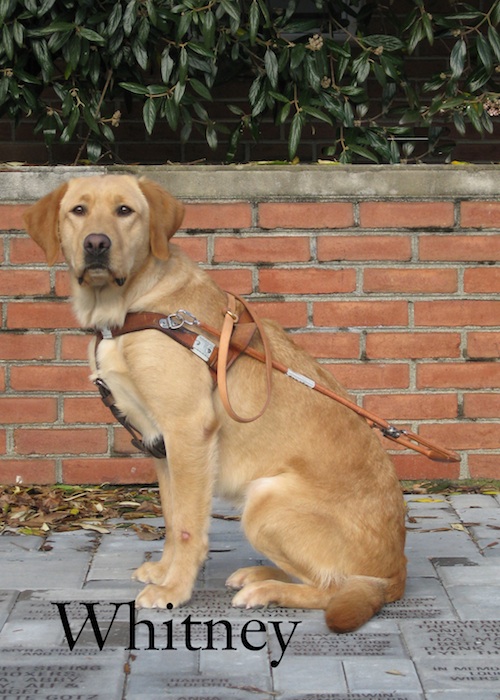A dog called Vondra
February 8, 2012 • 43 Comments • Posted in Seeing Eye dogs, UncategorizedMy friend Stephanie is a librarian in New Jersey, and she came to the Seeing Eye to visit while I was training with Whitney in December. Sometime after that she noticed a very calm, beautiful, healthy Golden Lab mix sitting in the back of the Well Read Bookstore in Hawthorne, NJ and thought the dog had a striking resemblance to the dogs she’d seen at the Seeing Eye.
Another shopper entered the store and asked the shop owner what the dog’s name was. Her reply: Vondra. “That’s when I knew for sure!” Stephanie laughed. “With a name like that, this had to be a dog from the Seeing Eye!”
Puppies born in each litter at the Seeing Eye are given names that start with the same letter of the alphabet. To avoid repeating names too often, the Seeing Eye finds itself getting a little creative at times. They must have already used Vicki, Veronica, Valerie and Venus by the time Vondra was born.
Vondra is nine years old now, and the bookstore owner’s family adopted her from the Seeing Eye when she was 18 months. Vondra had been deemed unfit to be matched with a blind person during puppy training because she was too much of a people person. From the Seeing Eye web site:
When a dog is removed from consideration as a guide, it is offered to the volunteer who raised it as a puppy. If the puppy raiser does not adopt the dog, it becomes available to other homes. If the dog has potential to work in law enforcement, those organizations are given priority in selecting dogs. If the dog does not go to one of these agencies, we place the dog with a family in the community.
The Seeing Eye asks a standard adoption fee of $500, but that is reduced if you are willing to take an older, retired dog. Whatever you do, if you adopt a dog from the Seeing Eye, don’t assume you’ll get a dog with a normal name — we Seeing Eye grads sometimes feel at the mercy of the staff member who names the pups!
Veterinary Pet Insurance Co (VPI). Has published its list of the most popular names for cats and dogs in 2011, and I’ve never met a Seeing Eye dog with any name on this list:
Top female dog names for 2011:
1. Bella
2. Lucy
3. Molly
4. Daisy
5. Maggie
6. Sophie
7. ChloeTop male dog names for 2011:
1. Max
2. Buddy
3. Charlie
4. Rocky
5. Bailey
6. Jake
7. Cooper

That's Hanni, on the morning of her 12th birthday (Mike was in Urbana visiting). Even at 12, her tail's a blur.
What?! The name Hanni didn’t make that list?! Hanni is my retired Seeing Eye dog — she was born in the “h” litter. Her name sounds like Bonnie, I used to tell people, but it starts with an ‘h’.
”What does it mean?” people would ask.
“Hmmm,” I take my time, act like I was thinking of an answer. “It means…it means they ran out of all the normal female names that start with ‘H’.”
In the end, of course, the dog’s name doesn’t really matter. And believe me, the name Hanni grew on me when she started guiding me safely through busy city intersections. It’s Hanni’s 12th birthdaytoday (happy birthday, dear Hanni!) and I can’t imagine her having any other
name — she’s a perfect Hanni.
For more information on adopting a dog from the Seeing Eye, email the adoption office at dogadoptions@seeingeye.org or call (973) 539-4425, ext. 1877.
